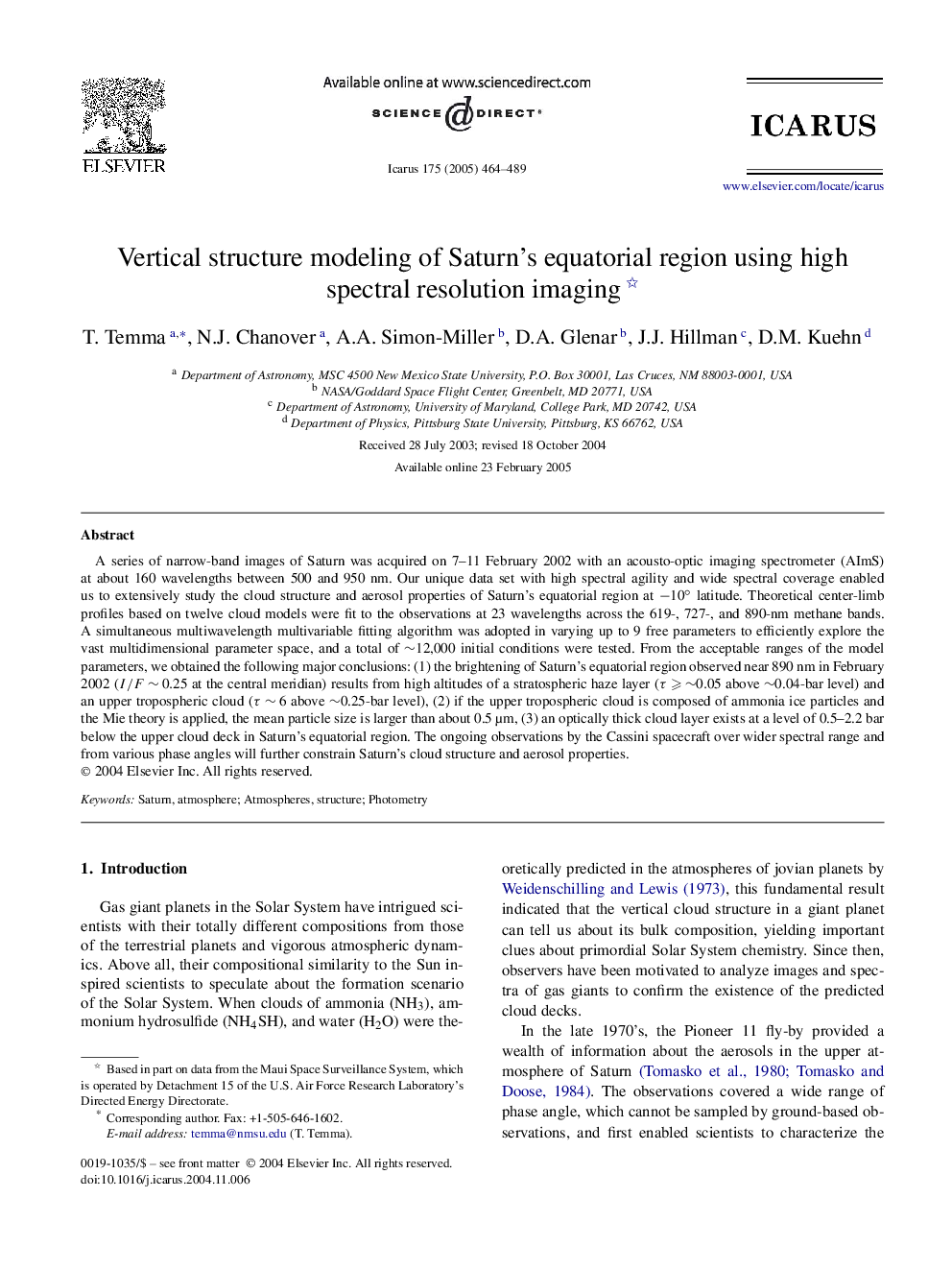| Article ID | Journal | Published Year | Pages | File Type |
|---|---|---|---|---|
| 10702066 | Icarus | 2005 | 26 Pages |
Abstract
A series of narrow-band images of Saturn was acquired on 7-11 February 2002 with an acousto-optic imaging spectrometer (AImS) at about 160 wavelengths between 500 and 950 nm. Our unique data set with high spectral agility and wide spectral coverage enabled us to extensively study the cloud structure and aerosol properties of Saturn's equatorial region at â10° latitude. Theoretical center-limb profiles based on twelve cloud models were fit to the observations at 23 wavelengths across the 619-, 727-, and 890-nm methane bands. A simultaneous multiwavelength multivariable fitting algorithm was adopted in varying up to 9 free parameters to efficiently explore the vast multidimensional parameter space, and a total of â¼12,000 initial conditions were tested. From the acceptable ranges of the model parameters, we obtained the following major conclusions: (1) the brightening of Saturn's equatorial region observed near 890 nm in February 2002 (I/Fâ¼0.25 at the central meridian) results from high altitudes of a stratospheric haze layer (Ï⩾â¼0.05 above â¼0.04-bar level) and an upper tropospheric cloud (Ïâ¼6 above â¼0.25-bar level), (2) if the upper tropospheric cloud is composed of ammonia ice particles and the Mie theory is applied, the mean particle size is larger than about 0.5 μm, (3) an optically thick cloud layer exists at a level of 0.5-2.2 bar below the upper cloud deck in Saturn's equatorial region. The ongoing observations by the Cassini spacecraft over wider spectral range and from various phase angles will further constrain Saturn's cloud structure and aerosol properties.
Related Topics
Physical Sciences and Engineering
Earth and Planetary Sciences
Space and Planetary Science
Authors
T. Temma, N.J. Chanover, A.A. Simon-Miller, D.A. Glenar, J.J. Hillman, D.M. Kuehn,
